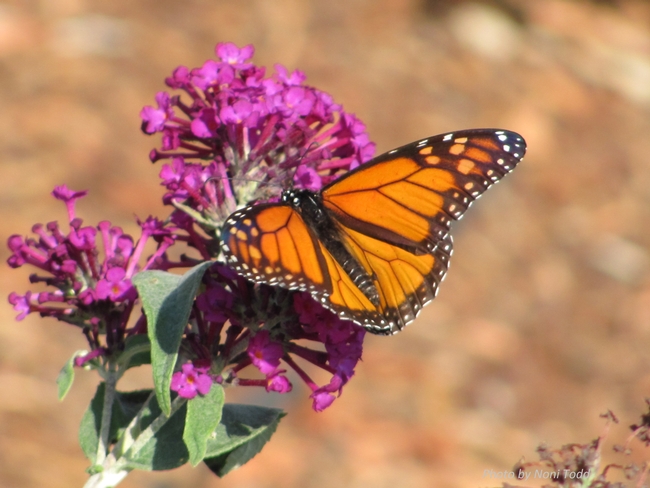
National Pollinator Week
By Linda Lewis Griffith UCCE Master Gardener
National Pollinator Week is June 20-26. It's a time to celebrate the hard-working hummingbirds, bats, bees, beetles, butterflies and flies that carry pollen from one plant to another and pollinate over 75 percent of the flowering plants and nearly 75 percent of our crops. Pollination occurs when pollen from the male part of the flower (stamen) is moved to the female part (stigma) of the same or another flower. Fertilization takes place and results in the production of flowers, fruits and seeds. Animals visit flowers in search of food and sometimes even mates, shelter and nest-building materials. Some animals, such as many types of bees, intentionally collect pollen; others, like butterflies and birds, move pollen incidentally because the pollen sticks on their body as they collect nectar from flowers. All of these animals are considered pollinators.
According to the U.S. Fish & Wildlife Service, pollination by honey bees in the United States alone contributed to over $19 billion worth of marketable crops in 2010.
Yet pollinators are in trouble. A recent study of the status of pollinators in North America by the National Academy of Sciences found that populations of honey bees (which are not native to North America) and some wild pollinators are declining. Drops in wild pollinators may be a result of habitat loss and degradation. A decrease in managed bee populations is linked to diseases caused by introduced parasites and pathogens.
There's plenty you can do to protect pollinators. The U.S. Fish & Wildlife Service offers these suggestions: Plant a pollinator garden. Choose plants that flower at different times of the year to provide nectar and pollen sources throughout the year.
- Provide a variety of flower colors and shapes to attract a wide range of different pollinators.
- Select native plants whenever possible. Native plants will attract more native pollinators and can serve as nesting sites for some species.
- Avoid or limit pesticide use. Pesticides kill more than the target pest. Some pesticide residues can harm pollinators for several days after the pesticide is applied. They also kill natural predators which can lead to even worse pest problems.